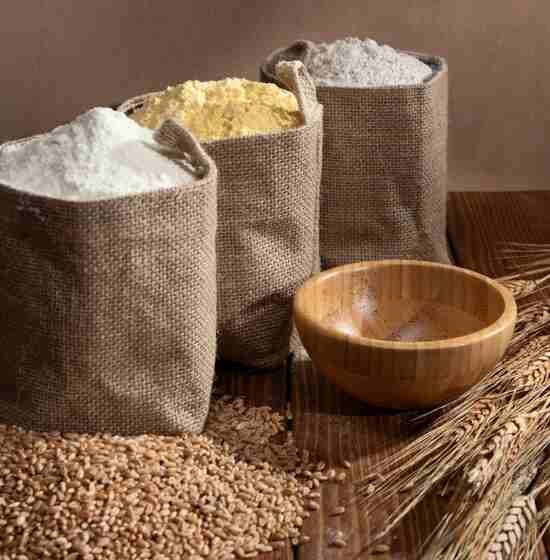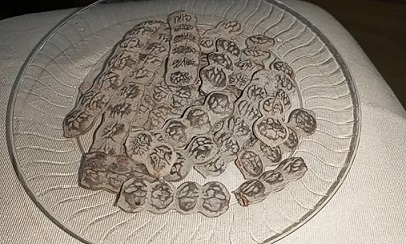 Best Millet flours to Control Cholesterol Levels and Blood Sugar
Best Millet flours to Control Cholesterol Levels and Blood Sugar
Millet flours are a great choice for people who want to improve their health and manage their blood sugar and cholesterol levels.
Millet flours are a healthy and delicious alternative to wheat-based flours. Millet flours are made from millet grains, which are small-seeded grasses that are rich in dietary fiber, protein, antioxidants, and micronutrients.
Millet flours have a low glycemic index, which means they do not spike your blood sugar levels after consumption. They also contain phytosterols, which are plant compounds that can lower your bad cholesterol and prevent cardiovascular diseases.
In this article, we will take a look at the benefits of what we term the best millet flours that you can include in your diet to control your cholesterol and blood sugar levels. We will also provide some tips on how to use them in your recipes.
What Is Millet Flour?
Millet flour is a type of flour made from grinding millet, which is a cereal grain that belongs to the grass family. Millet flour is gluten-free, high in protein, fiber, and antioxidants, and has a mild, nutty flavor.
Millet flour can be used for making various dishes, such as bread, pancakes, muffins, swallows, and cookies, as well as making flatbread and savory snacks. Millet flour is also beneficial for controlling cholesterol and blood sugar levels .
5 Best Millet Flours to Control Cholesterol Levels and Blood Sugar
Pearl Millet Flour (Bajra) or Jero
Pearl millet flour, or bajra, is one of the most widely consumed millet flours in India. It is high in fiber, which helps regulate your digestion and bowel movements. It also helps you feel full for longer, which can prevent overeating and weight gain. Pearl millet flour is also a good source of iron, magnesium, zinc, and phosphorus, which are essential for your blood, bones, and immune system.
Pearl millet flour can help you lower your cholesterol levels, as it contains phytosterols, which block the absorption of cholesterol in your intestines.
It also has anti-inflammatory and antioxidant properties, which can protect your cells from oxidative stress and inflammation. Pearl millet flour can also help you control your blood sugar levels, as it has a low glycemic index and can slow down the release of glucose into your bloodstream.
You can use pearl millet flour to make flatbreads, such as roti, paratha, or bhakri. You can also use it to make porridge, pancakes, or muffins. You can mix it with other flours, such as wheat or ragi, to enhance the nutritional value and taste.
Pearl Millet Flour Other Names
- Bajra in India
- Jero Nigeria, Hausa language
- Hegni in Niger – Djerma language
- Sanyo in Mali
- Dukhon in Sudan
- Mahangu in Namibia
Finger Millet Flour (Ragi) – Tamba in Hausa
Finger Millet known as Eleusine corocana, also called Tamba in Hausa. Finger millet flour, tamba, or ragi in India, is another popular millet flour.
It has a reddish-brown color and a mild flavor. It is one of the best sources of calcium among cereals, which is important for your bones and teeth. It also contains protein, iron, and vitamin C, which can boost your energy, immunity, and skin health.
Finger millet flour can help you lower your cholesterol levels, as it contains soluble fiber, which binds to the bile acids in your liver and excretes them out of your body. This reduces the production of cholesterol and improves your lipid profile.
Tamba flour can also help you control your blood sugar levels, as it has a low glycemic index and can increase the secretion of insulin in your pancreas. It also contains amino acids, such as methionine and tryptophan, which can reduce your sugar cravings and appetite.
You can use finger millet flour Tamba to make flatbreads, such as roti, dosa, tuwo tamba, swallow or idli. You can also use it to make porridge, cookies, or cakes. You can mix it with other flours, such as wheat or oats, to improve the texture and flavor.
Sorghum Flour (Jowar) – Oka Baba or Dawa
Sorghum flour, or jowar, It is called oka baba Yoruba and dawa in Hausa is a gluten-free millet flour that has a white or yellow color and a sweet flavor.
It is high in protein, which can help you build and repair your muscles and tissues. It also contains fiber, iron, potassium, and B vitamins, which can support your digestion, blood pressure, and nervous system.
Sorghum flour can help you lower your cholesterol levels, as it contains phytosterols, which can reduce the absorption of cholesterol in your gut.
It also has anti-inflammatory and antioxidant properties, which can prevent the damage of your blood vessels and lower the risk of heart diseases.
Sorghum flour can also help you control your blood sugar levels, as it has a low glycemic index and can modulate the activity of enzymes that break down carbohydrates in your body.
You can use sorghum flour to make flatbreads, such as roti, thalipeeth, or thepla. You can also use it to make porridge, waffles, or bread. You can mix it with other flours, such as rice or corn, to add some variety and taste.
Foxtail Millet Flour (Kangni)
Foxtail millet flour, or kangni, is a light yellow millet flour that has a mild flavor and a fine texture. It is rich in fiber, which can help you improve your digestion and prevent constipation. It also contains protein, iron, calcium, and magnesium, which can enhance your muscle, bone, and blood health.
Foxtail millet flour can help you lower your cholesterol levels, as it contains phytosterols, which can inhibit the synthesis of cholesterol in your liver. It also has anti-diabetic and anti-obesity effects, which can regulate your blood sugar and fat metabolism.
Basically, this millet flour can also help you control your blood sugar levels, as it has a low glycemic index and can increase the sensitivity of your cells to insulin. It also contains phenolic compounds, which can scavenge the free radicals and protect your cells from oxidative stress.
You can use foxtail millet flour to make flatbreads, such as roti, cheela, or uttapam, tuwo, swallows. You can also use it to make porridge, khichdi, or upma. You can mix it with other flours, such as wheat or ragi, to improve the nutritional value and taste.
Barnyard Millet Flour (Sanwa)
Barnyard millet flour, or sanwa, is a gluten-free millet flour that has a cream color and a nutty flavor. It is one of the fastest-growing cereals, which makes it a sustainable and eco-friendly crop. It is high in fiber, which can help you regulate your appetite and bowel movements. It also contains protein, iron, and phosphorus, which can support your growth, immunity, and energy levels.
Barnyard millet flour can help you lower your cholesterol levels, as it contains phytosterols, which can decrease the production and absorption of cholesterol in your body. It also has anti-hyperlipidemic and anti-hypertensive effects, which can lower your blood pressure and triglycerides. Barnyard millet flour can also help you control your blood sugar levels, as it has a low glycemic index and can reduce the postprandial glucose and insulin spikes. It also contains flavonoids, which can modulate the expression of genes involved in glucose and lipid metabolism.
You can use barnyard millet flour to make flatbreads, such as roti, dosa, swallows, or chilla, tuwo. You can also use it to make porridge, kheer, or halwa. You can mix it with other flours, such as wheat or rice, to enhance the texture and flavor.
Conclusion
Millet flours are a healthy and delicious alternative to wheat-based flours. They can help you control your cholesterol and blood sugar levels, as well as provide you with various other benefits for your overall well-being. You can use them to make different dishes and enjoy their taste and nutrition. However, you should also consult your doctor if you have any medical reaction or allergies after eating.
Frequently Asked Questions About Best Millet Flours
Are millet flours gluten-free?
Yes, millet flours are gluten-free, which makes them suitable for people with celiac disease or gluten intolerance. However, you should always check the label of the product to make sure it is not contaminated with gluten from other sources.
How to store millet flours?
You should store millet flours in an airtight container in a cool and dry place. You can also refrigerate or freeze them to extend their shelf life. However, you should use them within six months of opening, as they may lose their freshness and quality over time.
How to measure millet flours?
You can measure millet flours by using a standard measuring cup or a digital scale. However, you should always follow the recipe instructions and adjust the quantity according to your preference and taste.
How to substitute millet flours for wheat flour?
You can substitute millet flours for wheat flour in a 1:1 ratio in most recipes. However, you may need to add some extra liquid, such as water, milk, or eggs, to achieve the desired consistency and texture. You may also need to adjust the baking time and temperature, as millet flours may cook faster or slower than wheat flour.
What are the benefits of sprouting millet flours?
Sprouting millet flours can increase their nutritional value and digestibility. Sprouting can activate the enzymes and break down the anti-nutrients, such as phytic acid and tannins, in the millet grains. This can enhance the
Which millet helps to control diabetes?
Bajra pearl millet It is well known that pearl millet lowers triglyceride levels and improves insulin sensitivity. Because of its high dietary fiber content, it is also very effective in preventing diabetes. Compared to other foods, it digests more slowly and releases glucose into the bloodstream more slowly.
Which millet can be eaten everyday?
You can have millets as a meal or snack once a day, such as ragi and jowar. An adult should have between thirty and forty grams of grains daily.
Millets need to be eaten in moderation, just like any other nutritious meal. Eating these three to four times a week is safe.


